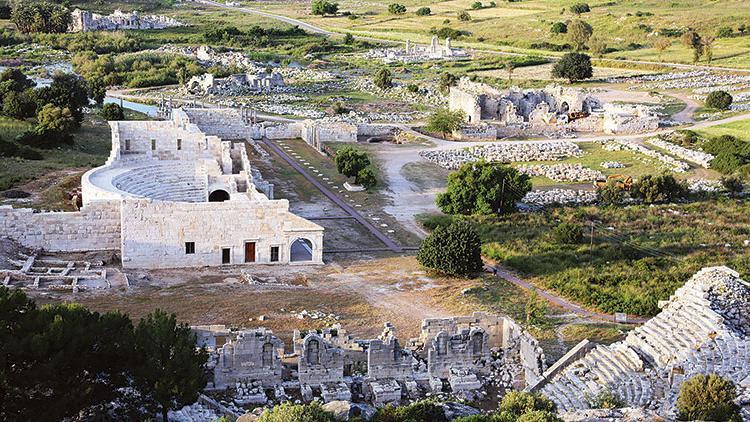
At 24 meters in height, the Patara Lighthouse in the ancient city of Patara, located in the southern province of Antalya’s Kaş district, will be erected again once the Antalya Conservation Board gives an approval for the restoration project.
The project has already been presented to the Antalya Conservation Board. Once it is approved by the board, the local governor’s office will hold a tender for the restoration of the lighthouse out of its original pieces, which were discovered during excavations in the region.
Archaeologists say that the about 2,000-year-old lighthouse might have been destroyed by a tsunami that hit the region in ancient times. The ruins of the lighthouse were brought to light 2,004 years ago during excavations that are still underway in the ancient city.
The excavation works in Patara started in 1988 and are being continued by the head of Akdeniz University’s Archaeology Department, Prof. Havva Işık, and her team.
“It is not the world’s first lighthouse. The oldest lighthouse is the lighthouse of Alexandria, but the Patara Lighthouse will be the only lighthouse that will be erected with its original pieces. It is one of the most important cultural heritages of our country,” said Işık.
The Lycian civilization is one of the oldest Mediterranean civilizations and Patara was the capital of Lucian league. According to mythology, it is the birthplace of Apollo and is believed that St. Nicholas was born here.
Excavations show that Patara ancient city is older than 2,000 years and has many monuments that could shed light on ancient history. Some of the most interesting finding in the city are bouleuterion, the theater, an amazing main street, baths and temples.
Bouleuterion is the parliament building where the elected representatives of the Lycian League met. The arrangement of the seating is similar to that of a theater. The league is being touted as the first multi-city democratic institution.
These ancient monuments were all under sand when the excavations in the ancient city started. From the point of view of restoration, this was considered to be a good thing because a great deal of the stone had been preserved or protected from being recycled.
Turkish authorities have removed vast amounts of sand and restored some of the buildings, using a mixture of original stone, new stone (carefully chosen to match the old stone), new marble, and cement where necessary.
The restoration of the bouleuterion was completed with the funds provided by the Turkish Parliament. Almost all of the restoration was completed using original pieces of the bouleuterion. The next plan is to veil the top of the bouleuterion with a smart roof system on which sun energy panels as well as a heating and cooling system will be installed. The ancient building will be opened later as a museum.